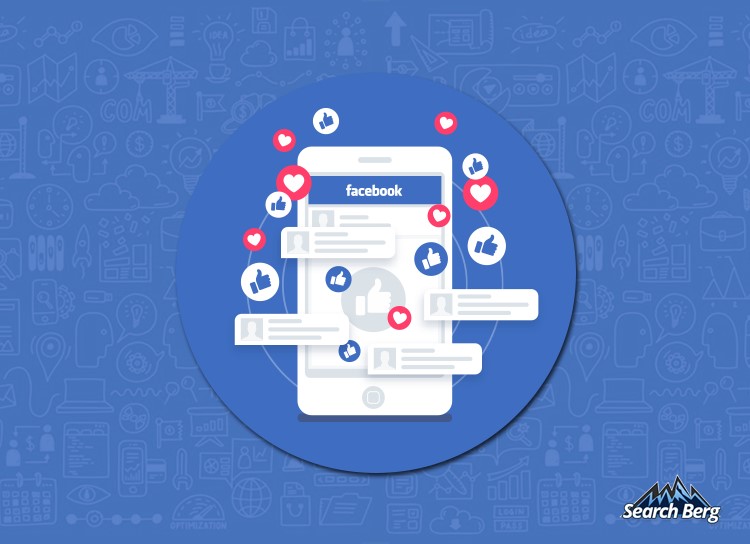How Much Do Facebook Ads Cost in 2023? Exploring the Latest Trends
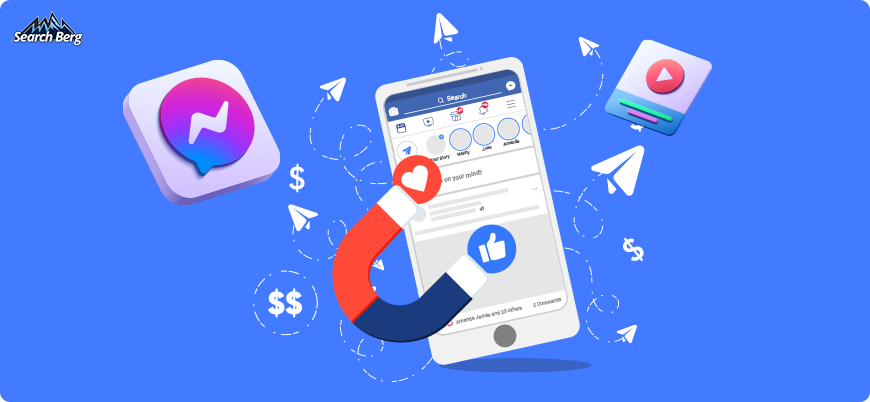
Let’s cut to the chase. You’re not here for fluff; you’re here for answers.
If you run a small to medium-sized business, every dollar counts, and every decision can make or break your quarter.
As you navigate the murky waters of Facebook ads, you may feel like you’re steering a ship without a compass.
Just when you think you’ve got your bearings, a new algorithm wave rolls in, tossing your budget overboard. The only constant is change. And the stakes? Your bottom line.
What do you need for these treacherous seas? GPS: a trusted, detailed, and up-to-date map that doesn’t just answer the question, “How much does a Facebook ad cost?” but also gives you the why, the how, and the what’s next.
In our comprehensive guide, we’re about to give you just that: a deep dive into the nuances that’ll answer your burning questions and make you the captain of your own advertising destiny. Are you with us? Let’s roll out the grand plan!
The Cost of Facebook Ads
Every business, big or small, wonders the same thing, “How much do I need to set aside for Facebook advertising?” The complexity of this question mirrors the intricacy of the platform itself.
Before we land on specific figures, let’s take some time to understand the myriad of variables in the equation. Much like buying a custom suit or dress, several factors influence the final tag: fabric quality, designer reputation, tailoring precision, and even the city you’re in.
Similarly, Facebook ad costs are molded by:
- Ad Type: Whether you’re looking at a simple image ad, a carousel, a video, or one of the more interactive ad formats, each comes with its own pricing structure.
- Target Audience: The more specific and niche your audience, the higher the cost. For instance, targeting a general age group in a country will be less pricey than zeroing in on a specific age group in a particular city with distinct interests.
- Placement: Opting for Facebook News Feed placement may differ in cost from Instagram Stories or the Audience Network. And with the ever-growing family of Facebook platforms, options have both diversified and become more intricate in cost structures.
- Time & Seasonality: If you run ads during peak shopping seasons, say Black Friday or Christmas, the cost will be higher due to increased competition (more on this later).
- Bidding Strategy: Whether you’re going for cost-capping, target cost, or lowest-cost bidding, your strategy will reflect in your final ad expenditure.
Given the factors above, in 2023, the average Facebook ad cost is roughly $0.94 per click. However, this is a broad spectrum. For industries like eCommerce or real estate, you may find yourself at the higher end of this range. In contrast, sectors with a more general appeal can enjoy lower costs.
The average Facebook CPM, or the cost per 1,000 impressions, has been hovering around the $5 to $30 range, largely dependent on the target demographic and ad placement. If we had to pick an average, we’d say the cost per 1,000 impressions falls at $12.07.
It’s a bidding war out there. As more businesses recognize Facebook’s advertising potential, the competition intensifies. With brands jostling for that prime spot in a user’s feed, the cost naturally elevates. However, while the initial cost may seem steep, the returns, in terms of engagement and conversion, justify the investment.
While it’s tempting to look solely at cost, it’s the quality that often determines your ad’s success. Facebook’s algorithm rewards ads that resonate with users. The better your ad quality and relevance, the better your placement and the lower your cost. It’s a symbiotic relationship where both Facebook and its advertisers thrive on providing value to the end user.
While there’s no fixed sticker price for a Facebook ad in 2023, a deep understanding of the influencing factors coupled with a focus on quality can ensure that every penny spent yields maximum returns. The digital realm may be intricate, but with the right insights, it promises a fruitful journey for advertisers willing to navigate its waters.
That’s why we’re here. Let’s delve deeper into the bidding models and critical insights that govern the Facebook advertising landscape.
1. The Siren Song of CPM (Cost Per Mille)
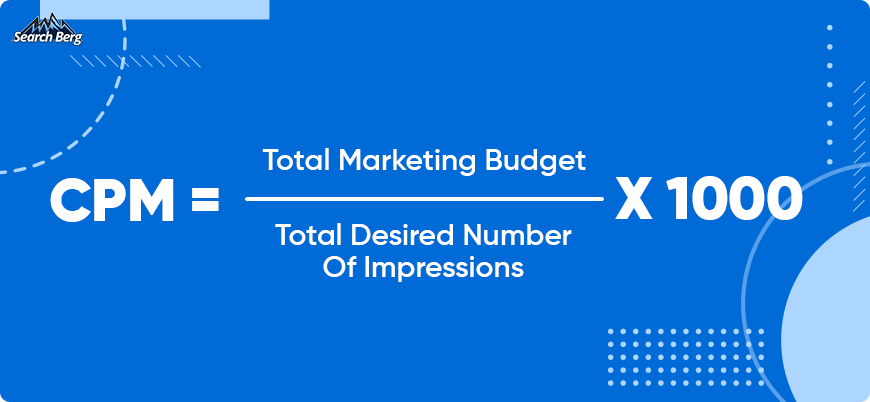
CPM, or cost per mille, measures the cost of 1,000 impressions on your Facebook ad. It’s the siren song of advertising metrics: inviting, seemingly straightforward, yet deeply nuanced.
On the surface, a lower CPM may look like a win; after all, who doesn’t want to reach 1,000 potential customers for fewer dollars? However, one mustn’t overlook the complexities lurking beneath this metric.
In the dynamic ecosystem of Facebook ads, CPM isn’t just a cost indicator; it’s a pulse check on several vital aspects of your ad campaign, from audience targeting to ad quality.
1.1. Audience Specificity
For starters, the average Facebook CPM rate is closely tied to how specific or broad your audience is. The more refined your targeting, the more competition for ad space.
For example, if you’re a local boutique selling hand-crafted leather goods, targeting an audience interested in “luxury fashion” within a five-mile radius of your location may incur a higher CPM compared to a more generalized targeting approach.
However, this higher CPM may actually be beneficial in that it usually results in more qualified leads. Sometimes, paying more upfront can lead to better downstream metrics like higher click-through rates (CTR) and conversion rates.
1.2. Seasonal and Industry Trends
Seasonal fluctuations and industry trends play a massive role in CPM costs. The last quarter of the year, famous for the holiday shopping frenzy, typically sees a spike in CPM due to increased competition for ad space.
Similarly, highly competitive industries often have naturally high CPMs. For instance, the tech and legal sectors have historically had higher CPM rates (given the fierce competition and the higher customer lifetime value in these industries).
1.3.Quality and Relevance Score
Your ad’s quality and relevance score (a metric assigned by Facebook based on user interaction)plays a pivotal role in determining the average Facebook CPM.
If your ad gets a higher relevance score, i.e., it’s well-received by your target audience, Facebook will reward you with a lower CPM. On the other hand, a poorly performing ad that garners negative feedback will suffer a higher CPM.
Recommended Read: How to Get More Likes on Facebook
1.4. Ad Placement and Format
CPM also varies based on ad placement and format. For instance, ads placed in Facebook’s news feed typically have a higher CPM compared to those on the sidebar or in Facebook Stories.
Video ads usually cost more but have shown to be more engaging, which could result in a better ROI despite a higher CPM.
1.5. Bid Strategy
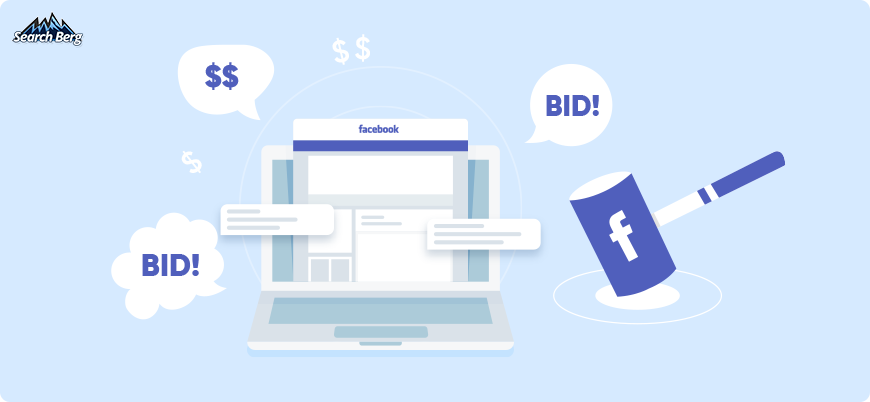
Your bidding strategy can also impact CPM. Facebook offers various bidding options, including lowest cost without a cap, lowest cost with a bid cap, and target cost.
Each has its own advantages and drawbacks; it affects the CPM and your campaign’s overall performance. For instance, setting a bid cap may control costs but could also limit ad reach.
2. The CPC Enigma (Cost Per Click)
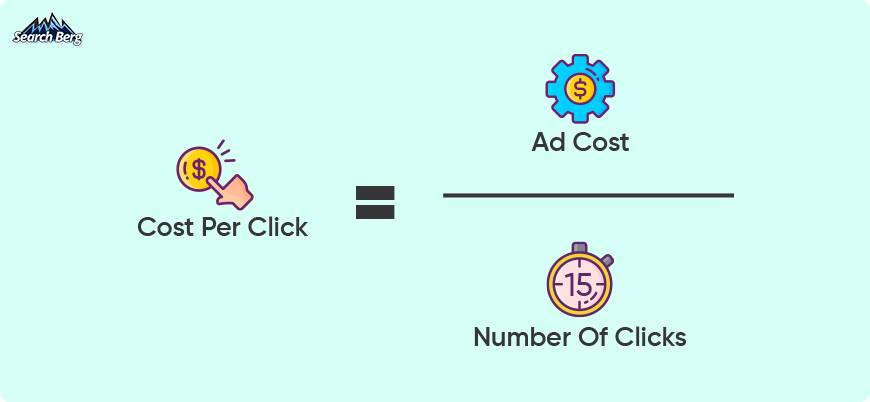
Ah, cost per click (CPC): the metric that serves as the golden compass guiding an advertiser’s quest for digital marketing nirvana.
At its core, CPC tells you how much you’re paying for each click your Facebook ad receives. It seems simple, but here’s where things get enigmatic: unlike its CPM cousin, which focuses purely on reach, CPC is tied to actual engagement.
That single click represents a user who has not only seen your ad but also found it compelling enough to interact with. That’s a far more nuanced tale woven together by multiple factors (each worthy of your attention).
Here’s a breakdown of the average Facebook ad cost per click for different industries (keep in mind that this is an estimate):
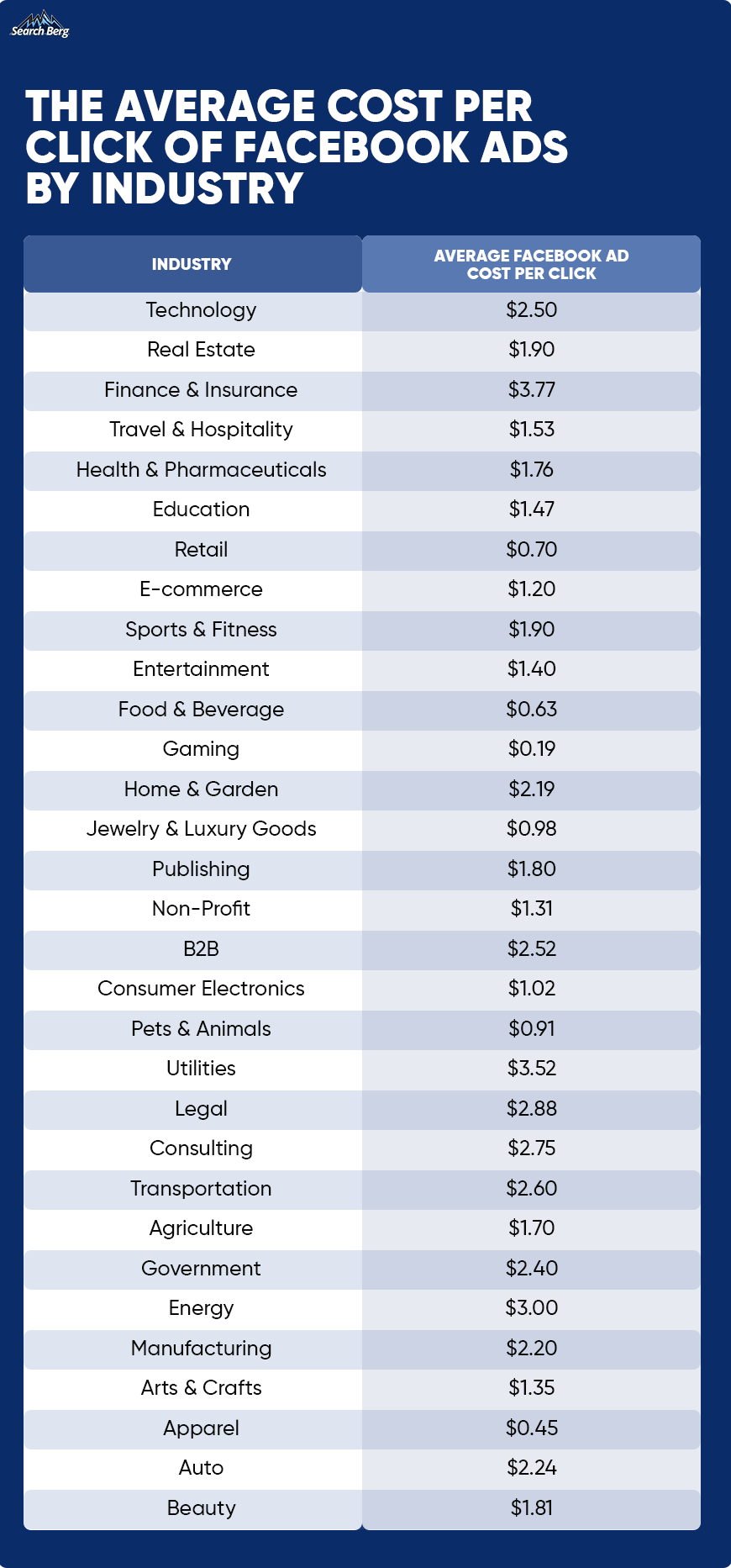
2.1. The Landing Page Conundrum
The first thing to understand about cost per click is that it’s not an isolated metric; it’s part of a broader story. Your CPC is directly influenced by the quality and relevance of your landing page. Users clicking through your ad expect a seamless transition that aligns with what was promised.
If your landing page delivers on the ad’s promise with relevant content and an easy navigation path to conversion, this positive user experience can lead to lower CPC costs over time.
A mismatch, however, can result in higher bounce rates, which could make your CPC skyrocket.
2.2. Audience Alignment and Segmentation
The precision of your audience targeting significantly impacts CPC. Using highly specific attributes and behaviors can refine your audience, resulting in better click-through rates and lower CPC.
This isn’t a “set it and forget it” element; regular adjustments based on analytics are imperative. Utilizing Facebook’s Lookalike Audiences feature to mirror your best-performing segments can also be a strategic move to decrease CPC.
2.3. The Keyword Connection
Keyword relevance still plays a role in your Facebook ad cost per click. Utilizing relevant keywords in your ad copy and landing page can improve the ad’s overall relevance score. Your Facebook CPC will potentially go down.
2.4. Ad Format and Placement
Just like with CPM, the format and placement of your ad can significantly affect your CPC. While the News Feed is often the most effective (yet expensive) placement, don’t underestimate the power of Facebook’s Audience Network to provide lower CPCs.
Carousel ads or video ads may have a higher upfront cost but can often drive more engagement. You’ll enjoy a lower CPC in the long run.
2.5. Time Sensitivity
CPC isn’t static; it fluctuates based on a variety of time-sensitive factors. Weekends may offer a lower CPC as people have more free time to browse and click, but that could also depend on the industry you’re in.
Time of day can also influence CPC. For instance, B2B services might find a lower CPC during regular business hours when their target audience is most active.
2.6. The Impact of Ad Fatigue
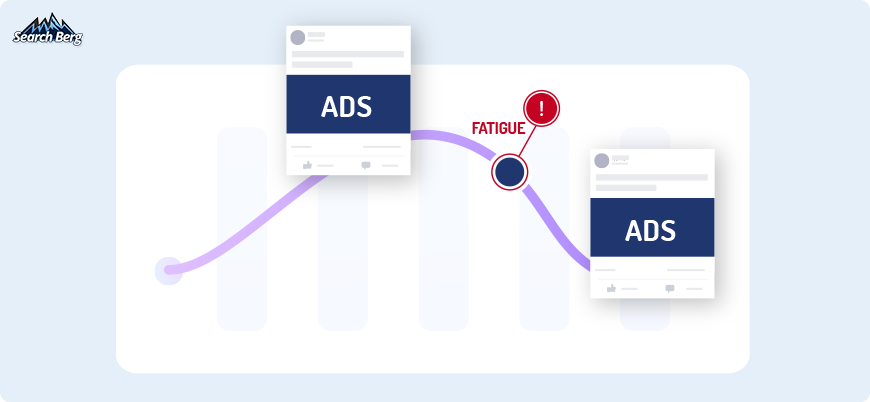
Ad fatigue occurs when your target audience is exposed to your ad creative multiple times and becomes less responsive to it. The more they see the same ad, the less impactful it becomes and the less likely they are to engage with it.
This diminishing return isn’t just detrimental to your ad’s performance but can also drive your Facebook ad cost per click higher.
When users stop clicking on an ad they’ve seen too many times, the ad’s click-through rate (CTR) drops. A lower CTR usually prompts Facebook’s algorithm to deem the ad less relevant to your target audience and push your CPC up.
How can you monitor ad fatigue? Keep an eye on the frequency metric in your Facebook ads dashboard. Frequency indicates how many times your ad has been shown to each individual in your target audience (on average).
A higher frequency is often an early indicator of ad fatigue. While there’s no universally “bad” frequency number, a frequency higher than 2–3 could be cause for concern, especially if you’re also noticing a drop in engagement metrics.
Combatting ad fatigue isn’t just about reducing frequency; it’s also about refreshing the creative elements in your ads. This could mean updating images, tweaking the copy, or even changing the calls-to-action (CTAs).
Another strategy to mitigate ad fatigue involves smarter retargeting and audience segmentation. By segmenting your audience into smaller, more targeted groups, you can serve more personalized ads and reduce the likelihood of ad fatigue.
Keep in mind that this precision comes at a cost. Targeted ads can be pricier than broader campaigns, mainly because you’re accessing a refined pool of users who are more likely to engage or convert, making them more valuable.
Furthermore, competitive niches or highly desirable demographics may drive up the costs due to increased demand. But there’s a silver lining: while you might pay more upfront for targeted ads, the ROI often justifies the expenditure.
By reaching the right people with a tailored message, businesses typically see higher conversion rates. Sweet, right? Check with your Facebook advertising team to dig into the Facebook targeted ads cost for your unique business, industry, and advertising approach.
2.7. Competition and Market Dynamics
Market dynamics can’t be ignored. If your competitors are also targeting a similar audience or using similar keywords, expect the CPC to be higher. Want to stay ahead of the game? Keep a tab on competitor strategies and adjust your bids and targeting criteria.SEO competitor analysis services will come in handy here.
3. The Myth of ROI (Return on Investment)
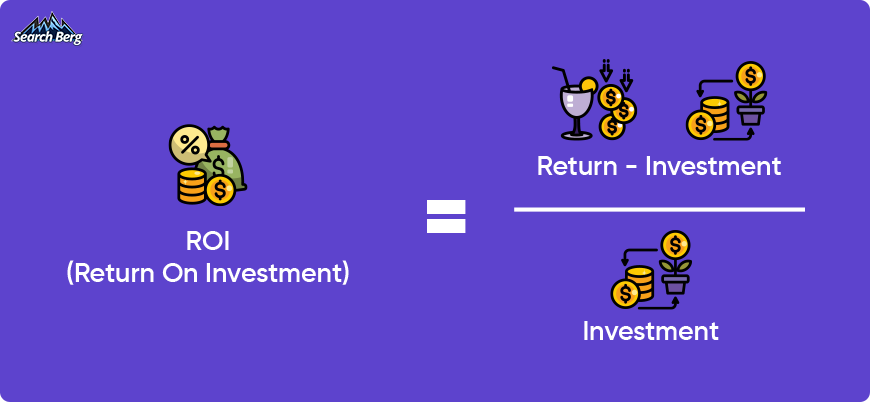
ROI, or return on investment, has achieved almost mythical status in the advertising world.
Often seen as the ultimate validation of an ad campaign’s efficacy, ROI is frequently held up as the trophy of success or, conversely, the flag of surrender. However, the mythology surrounding ROI often obscures its nuances and limitations; it’s considered a rather deceptive measure of success when used in isolation.
3.1. ROI: Not Just a Number
ROI seems straightforward at first; you’re simply measuring the profitability of your investment. However, it’s not a static figure etched in stone. Instead, it’s a dynamic metric that evolves over the course of a campaign and even beyond. You must grasp this metric if you want to calculate accurate Facebook ad campaign costs.
A campaign may show a low ROI initially but could mature into a highly profitable endeavor over time (especially when it comes to brand-building or customer loyalty efforts).
Let’s take customer lifetime value (LTV) as an example. If you’re evaluating ROI strictly based on the immediate revenue generated from an ad, you’re missing the larger picture of customer LTV.
A customer acquired through Facebook ads may spend exponentially more over the years. They could end up transforming what seemed like a breakeven ROI into a highly profitable acquisition in hindsight.
3.2. The Narrow Lens of Immediate Metrics
The tendency to focus solely on immediate metrics like click-through rates (CTR), cost per click (CPC), or even instant sales conversions is perhaps one of the most common pitfalls in advertising analytics.
Immediate metrics offer only a snapshot of a moment in time; they fail to encapsulate the ongoing narrative of an ad campaign’s impact.
For instance, a Facebook ad with an extraordinary CTR but low conversions may appear less profitable in the short term. However, this immediate metric doesn’t capture the ad’s capacity to influence future consumer behavior.
People who clicked but didn’t convert may still engage with the brand in other ways; they could subscribe to your newsletter, follow your social media channels, or even share your content.
These are softer (yet significant) forms of engagement that contribute to brand recognition and could lead to conversions down the line.
Immediate metrics often do not consider multi-touch attribution; a customer’s journey to conversion rarely occurs through a single touchpoint. People may see your Facebook ad, run a Google search, read reviews, and then convert through an email promotion. In such cases, looking strictly at the immediate ROI of the Facebook ad would be misleading.
By focusing too much on immediate metrics, marketers risk making reactionary decisions that could hamper long-term strategy.
For example, pulling the plug on an ad that has a low immediate ROI but contributes significantly to brand visibility may save costs in the short term but sacrifice potential long-term gains.
The key is to balance immediate metrics with other qualitative and long-term indicators to paint a fuller picture of ROI. Over time, you’ll end up making more accurate Facebook ad cost estimates.
3.3. Variables and Volatility
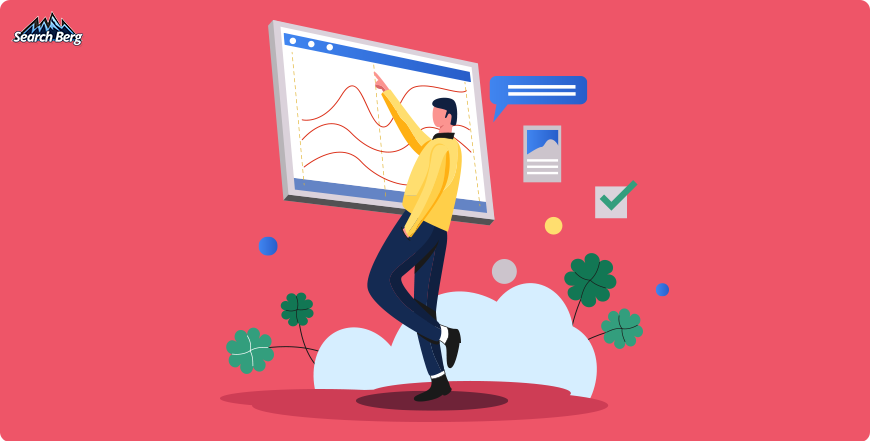
In the quest to quantify ROI, the inherent variables and volatility often get brushed under the rug.
While most advertisers are keenly aware of the variables they can control, like ad spend, targeting parameters, and ad design, there are external factors that can unpredictably influence ROI. These factors can end up creating an environment that’s far from a controlled experiment.
Market volatility is a prime example. Economic fluctuations can lead to sudden changes in consumer purchasing power. Both your cost metrics and revenue metrics can be affected.
A change in tariffs on goods could suddenly increase your cost of goods sold (COGS), which, in turn, could affect your ROI even if your ad campaign’s performance metrics stay constant.
Seasonal trends add another layer of complexity. For instance, a swimwear brand may see a steep decline in ROI during winter (irrespective of the ad campaign’s quality). Conversely, holiday seasons may inflate the ROI, setting unrealistic benchmarks for the rest of the year.
We can’t ignore global events like pandemics or political upheavals; they can also massively impact consumer behavior and, by extension, your ROI. These large-scale events can cause both sudden surges and sharp declines in market demand. They can skew ROI calculations and require rapid adjustments to advertising strategies.
Finally, consumer behavior itself is a variable. Evolving cultural trends or technological changes can shift consumer preferences and behaviors dramatically. For example, the rise of ad blockers has forced many businesses to reconsider how they calculate ROI on display advertising.
3.4. The Need for a More Holistic Approach
Instead of viewing ROI as the be-all and end-all, consider adopting a more holistic approach that accounts for different types of returns and various influencing factors.
Augment your ROI analysis with qualitative data (like customer satisfaction levels or brand recognition metrics). Use multi-touch attribution models to understand how your Facebook ads are contributing to conversions in conjunction with other marketing channels.
By integrating both quantitative and qualitative data, you’ll develop a more comprehensive and nuanced understanding of your campaign’s true impact. You’ll also land on a more precise Facebook ad cost average.
4. The Age of Dynamic Creative
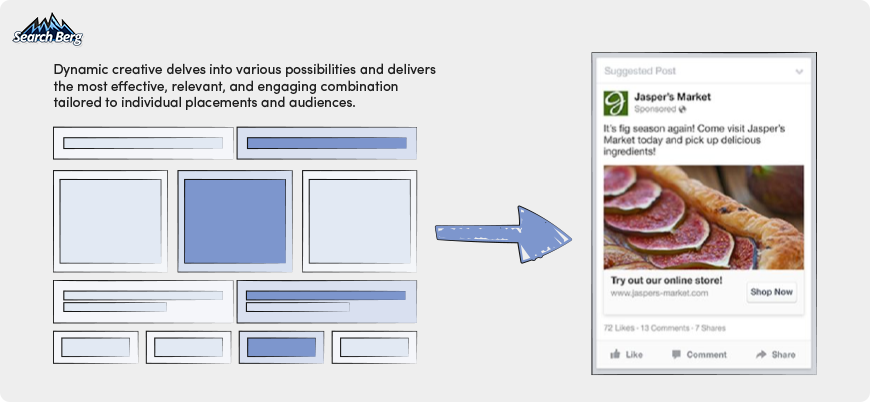
Welcome to the age of dynamic creative, where your Facebook ads don’t just sit there looking pretty; they transform, adapt, and fine-tune themselves like chameleons on a technicolor backdrop.
The days of one-size-fits-all advertising are long gone. Now, you can harness the power of algorithms to deliver hyper-personalized, highly relevant ad experiences.
Let’s delve into this magical realm where machine learning meets marketing finesse!
Recommended Read: Top 10 Ways to Grow a Small Business Through Facebook
4.1. The Algorithmic Paintbrush: How Dynamic Creative Works
Imagine an artist who can paint a different masterpiece for each viewer. That’s what dynamic creative does for your Facebook ads.
You feed various elements into Facebook’s algorithmic engine (multiple headlines, images, descriptions, and CTAs). The algorithm then gets to work, mixing and matching these elements to serve the perfect cocktail of content to each user based on their past behavior, preferences, and interactions.
But wait, there’s more.
Dynamic creative doesn’t just set it and forget it; it continuously learns. As users engage with your ad, the algorithm tweaks and optimizes the creative elements to enhance performance.
It’s like having a dedicated marketing analyst and a creative director rolled into one!
4.2. Breaking Down the Elements: What You Can Customize
Which raw materials can you hand over to this artistic algorithm? For starters, you can input multiple versions of ad headlines, text descriptions, and CTAs.
Then there are the visual elements: images and videos you can upload in various styles and formats. And don’t forget URLs; you can specify different landing pages to test their efficacy as well.
The sheer range of combinations this allows for is staggering. You could end up with hundreds or even thousands of unique ads, all automatically generated. Imagine the level of A/B testing this equips you with, except it’s not just A/B, it’s A to Z and everything in between!
4.3. Creative Strategy Meets Data Science: Why It’s Effective
At its core, dynamic creative is about marrying creative strategy with data science.
The days when gut instinct and aesthetic preferences dictated ad design are long gone. Now, you can back up creative decisions with hard data, rigorously tested and continuously optimized.
What makes dynamic creative so powerful is its ability to cater to the granular nuances of a diverse audience. You no longer need to segment your audience manually into dozens of subsets. The algorithm does that for you, serving each user an ad that’s most likely to resonate with them, based on a multitude of factors from location to past purchase behavior.
It’s hyper-targeting at its finest.
4.4. Caveats and Considerations: It’s Not a Magic Wand
While the allure of dynamic creative is undeniable, its limitations must be understood. This is not a set-it-and-forget-it solution; it requires ongoing supervision. Why? Because while algorithms can compute, they can’t intuit human emotion or cultural nuances.
For instance, an algorithm might not understand why a particular headline may be culturally insensitive or why a specific image may not align with your brand values.
Moreover, dynamic creative requires a significant volume of user interactions to fine-tune its performance.
It’s not ideal for niche markets with limited audience sizes, as the algorithm needs ample data to conduct its behind-the-scenes symphony of optimization.
4.5. Future-Forward: Where Dynamic Creative is Headed
As machine learning technologies continue to evolve, we can expect dynamic creative to become even more sophisticated.
Soon, real-time environmental factors like weather or news events could be integrated into the algorithm, allowing for ads that are not just user-specific but also moment-specific.
Imagine an ad for umbrellas popping up on a user’s feed the moment it starts raining in their location. That’s not just advertising; that’s borderline telepathy!
In this new age, dynamic creative is your pathway to achieving the marketing utopia of the right message to the right person at the right time. It may not be a magic wand, but it’s pretty darn close.
5. The GEO Quandary
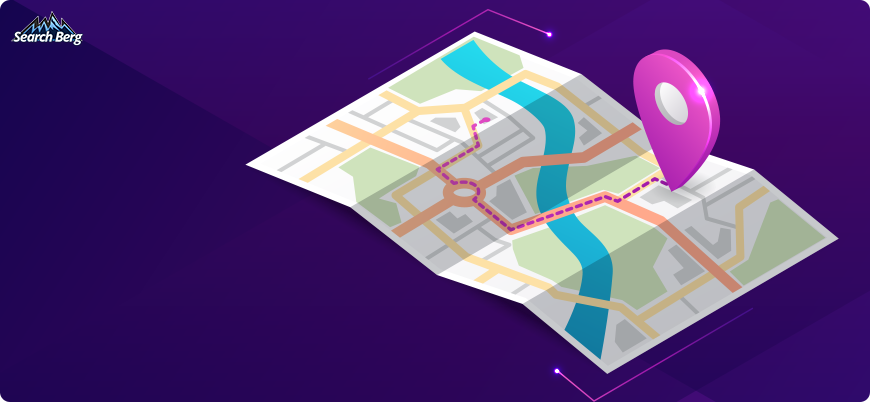
If you thought CPM and CPC were complex, throw GEO (geographic targeting) into the mix, and you’ll have a real puzzle.
A campaign in the U.S. may cost you $15 CPM, while the same could be $6 in India. Currency fluctuations, regional competition, and local economic conditions all contribute to this volatile landscape.
Let’s dig deeper.
5.1. Country & Economic Tiers
The nation you target makes a significant difference in your Facebook ad’s cost.
Developed countries like the U.S., Canada, the UK, and Australia typically demand higher advertising costs due to the fierce competition and higher purchasing power. On the flip side, emerging markets like India, Brazil, or certain African countries may offer more wallet-friendly rates.
Yet, it’s essential to remember that while costs may be lower, so will the average user’s purchasing power.
5.2. Urban vs. Rural Divide
The urban-rural divide also affects the cost of Facebook ads. Urban areas, with their concentrated audiences, generally incur higher costs. In stark contrast, rural zones may be lighter on the pocket but present challenges in terms of internet connectivity and tech-savviness.
Consider the bustling metropolis of New York City. The Big Apple is a tech-savvy, advertisement-rich environment. Most residents are regularly bombarded with digital ads across platforms, not just Facebook.
They have fast, reliable internet connections and the latest gadgets. They’re also more receptive to online shopping trends, which makes them prime targets for advertisers.
Hence, there’s a dense concentration of businesses vying for their attention on Facebook.
Now, let’s journey to a more rural setting, perhaps a small town in Montana. The pace of life here is different; residents may not be as digitally savvy as their city counterparts. Their online habits could be more infrequent, and their exposure to digital advertising might be relatively limited.
The competition for ad space in NYC is fierce, leading to higher bidding prices. The cost per click (CPC) or cost per mille (CPM) in such urban areas will generally be higher than in rural zones. In Montana, with fewer businesses clamoring for ad spots, costs might be lower.
However, the flip side is that the saturated ad environment in cities might lead to “ad blindness” among users. In contrast, the limited ads that rural users encounter could lead to higher engagement rates, as they might be viewed as novel or less routine.
5.3. Specialized Regions & Local Events
Specific regions can experience spikes in ad costs during local events, holidays, or celebrations. For instance, if you advertise in the days leading up to the Super Bowl, you’ll see a noticeable uptick in costs due to the heightened business activity.
Similarly, targeting regions with conventions, expos, or significant cultural events also means a temporary surge in ad pricing.
It’s important to keep all these nuances in mind when calculating the cost of Facebook ads. On paper, things may sound pretty straightforward. In practice, you’ll quickly realize that the actual Facebook ad cost varies tremendously.
Recommended Read: Mastering Local SEO: 5 Powerful Trends Taking 2023 by Storm!
6. Facebook Ads Cost Calculator
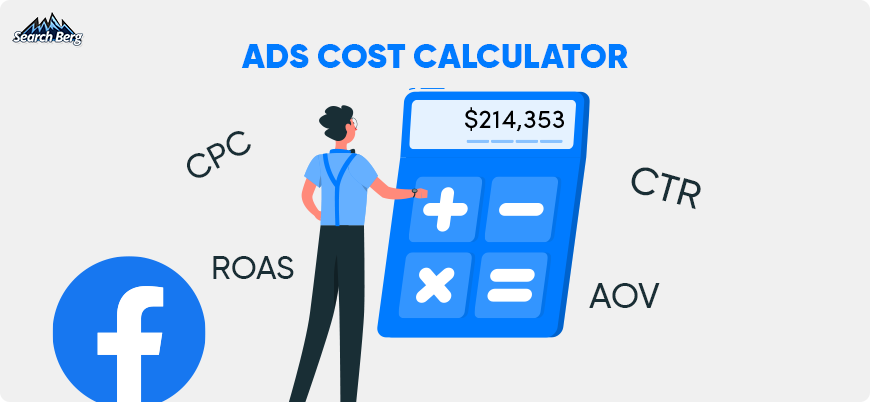
Search Berg’s Facebook ads cost calculator is a tool designed to help businesses get an estimate of their potential advertising costs on Facebook.
By inputting various parameters like your industry, target audience, and campaign objectives, we fetch an approximate range of what you should expect to pay, whether it’s on a cost-per-click (CPC) basis, cost-per-thousand impressions (CPM), or any other metric you’re focused on.
Our calculator evaluates a variety of factors to determine cost:
- Audience Demographics
- Ad Quality and Relevance
- Bidding Strategy
- Ad Placement
- Duration & Budget
This is a terrific way to keep your budget intact. We give you a complete picture of your expected expenditure on Facebook advertising.
Our ballpark figure enables businesses, especially those with tight budgets, to plan effectively.
By playing around with different parameters, you can see how each affects the potential cost. This can guide you in refining your approach for maximum ROI.
We also recommend turning your attention to the overall Facebook ad campaign cost, not just the Facebook ad cost per click.
Evaluating just the CPC might give you a snapshot, but the entire campaign cost offers a panoramic view. It’s akin to judging a movie based solely on its trailer.
The whole campaign encompasses a plethora of expenses, including design costs, copywriting, A/B testing, audience research, and even the time spent by your team strategizing and tweaking the campaign.
Understanding the full cost of your campaign provides valuable insights that can guide optimization. When you grasp the entirety of your expenses, you can make informed decisions.
Should you be investing more in audience research? Would hiring a professional copywriter boost your ad’s effectiveness?
By developing a clear picture of where your budget goes, you can make adjustments that lead to a more efficient and effective campaign. By analyzing what worked and what didn’t, you’ll also avoid making the same financial mistakes in subsequent campaigns.
It’s about learning, evolving, and ensuring every dollar spent brings you closer to your business goals. Before you sign up for Facebook advertising services, make sure you have a good grasp of the estimated Facebook ad campaign cost as well.
Start Working with Search Berg!
Think it’s time to delve deeper into the world of Facebook advertising and finally reach your target audience? We concur!
At Search Berg, we provide professional Facebook advertising services to help you increase your online visibility, make bigger and better sales, and steer your business in the right direction.
We bring our expertise, state-of-the-art tools (like our proprietary Facebook ads cost calculator), extensive experience, and penchant for staying ahead of digital trends to the table.
Let’s embark on a journey that redefines your advertising horizons one step at a time!





